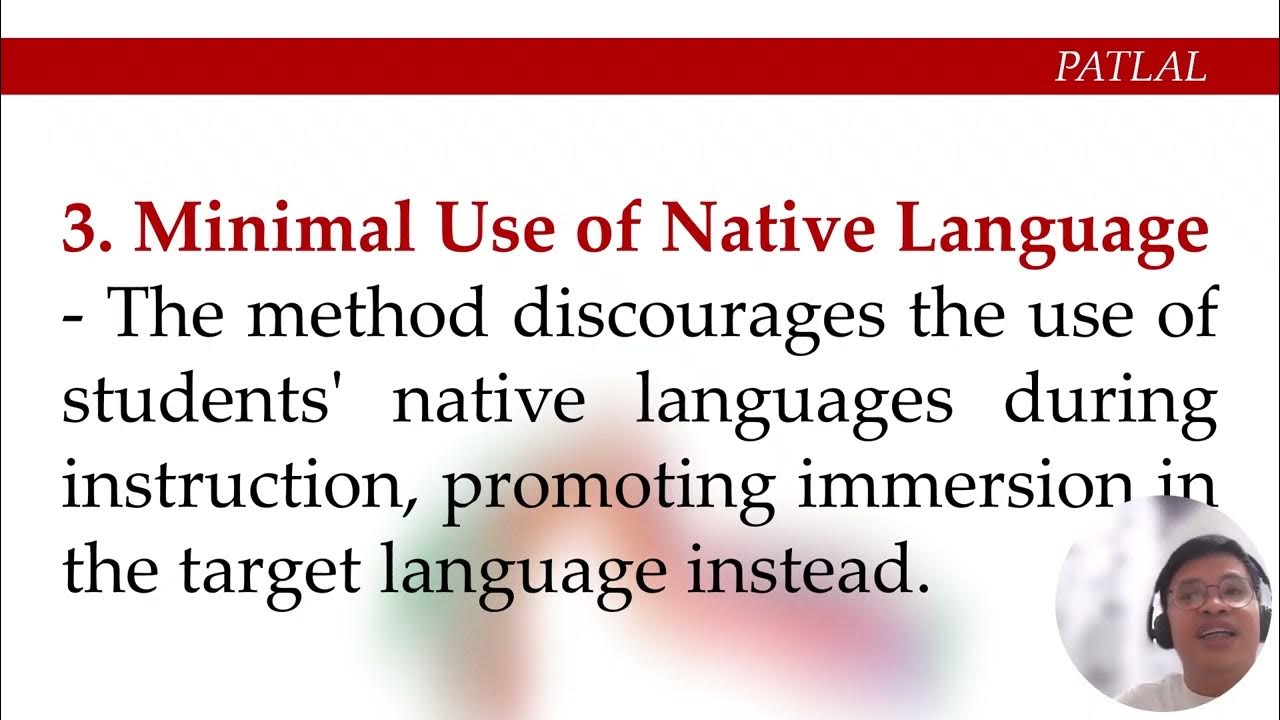Pendekatan Whole Language (MK : Pengembangan Bahasa Anak Usia Dini)
Summary
TLDRThis lecture introduces the Whole Language Approach, emphasizing its philosophy of teaching language holistically. The approach integrates language learning with other subjects such as math, science, and art, fostering children's internal motivation. Key principles include immersion in a language-rich environment, learning through demonstration and social interaction, encouraging active participation and creativity, allowing for experimentation and mistakes, and providing positive feedback. The approach stresses creating an interactive and supportive atmosphere where children are encouraged to explore language naturally and confidently, promoting both verbal and written skills.
Takeaways
- 😀 The 'Whole Language' approach is a philosophy and framework for teaching language, not a specific program or method. It focuses on teaching language as a whole, integrating it with other subjects like mathematics, art, and science.
- 😀 The core goal of the Whole Language approach is to emphasize intrinsic motivation in language learning, encouraging a deeper connection with language rather than relying on isolated skills or rote memorization.
- 😀 The approach encourages children to learn language holistically, through natural interactions with their environment, books, and social contexts, rather than isolated drills or mechanical exercises.
- 😀 One key principle of the Whole Language approach is immersion, where children are surrounded by rich language environments to enhance their learning and development.
- 😀 Demonstration plays a vital role in the Whole Language approach. Children learn by imitating the language and behavior modeled by their teachers and peers.
- 😀 Expectation in the Whole Language approach is that children learn and develop language skills according to their individual developmental stages, requiring age-appropriate materials and activities.
- 😀 Learning in the Whole Language approach involves social interaction, where children actively engage in cooperative learning, sharing, and practicing language skills with peers.
- 😀 Children are encouraged to experiment with language, making guesses and testing their understanding, which is crucial for building confidence and refining their language abilities.
- 😀 Teachers are responsible for providing constructive feedback to children, offering positive reinforcement and specific praise to motivate and guide them in their language development.
- 😀 Activities and learning experiences in the Whole Language approach should be purposeful, with clearly defined goals, ensuring that children are not only learning language but also engaging in meaningful, goal-oriented tasks.
Q & A
What is the 'Whole Language' approach?
-The 'Whole Language' approach is a teaching philosophy and framework that emphasizes teaching language as a whole, integrating it with other subjects like math, science, and art, to create a comprehensive learning experience for children.
What are the key principles of the 'Whole Language' approach?
-The key principles include immersion, demonstration, responsibility, approximations, and feedback. Each principle focuses on creating a rich learning environment, modeling language use, encouraging responsibility, allowing experimentation, and providing positive feedback.
How does immersion work in the 'Whole Language' approach?
-Immersion involves placing children in an environment rich in language resources, such as books, posters, and other reading materials. This exposes children to language in various forms, encouraging them to learn through interaction and observation.
Why is demonstration important in the 'Whole Language' approach?
-Demonstration is important because children learn by imitating adults. By providing clear examples of language use, educators model appropriate language behaviors, helping children develop their language skills by copying what they observe.
What does the principle of responsibility mean in the 'Whole Language' approach?
-Responsibility refers to allowing children to take an active role in their learning. This involves encouraging social interaction, collaboration with peers, and participation in language-related activities, fostering independence and accountability in the learning process.
What is the role of approximations in language learning for children?
-Approximations allow children to experiment with language, make guesses, and test their understanding. This freedom to try, make mistakes, and learn from them is crucial for developing confidence and language skills.
How does feedback work in the 'Whole Language' approach?
-Feedback in the 'Whole Language' approach involves providing positive and specific responses to children's language use. This can be verbal praise or encouragement, helping to reinforce good language practices and motivate further progress.
How can teachers use environmental resources in the 'Whole Language' approach?
-Teachers can enrich the classroom environment with diverse language resources like books, posters, and other written materials. This provides constant exposure to language, creating an immersive atmosphere that supports language learning.
How does the 'Whole Language' approach encourage creativity in children?
-The 'Whole Language' approach encourages creativity by allowing children to engage in language experiments, express themselves freely, and explore different ways to communicate. This supports the development of both written and verbal language skills.
What types of activities are best suited for implementing the 'Whole Language' approach?
-Activities that integrate language with other areas like math, science, and arts work best. These might include reading stories, playing language games, engaging in discussions, and participating in collaborative projects, all of which reinforce language learning in various contexts.
Outlines

This section is available to paid users only. Please upgrade to access this part.
Upgrade NowMindmap

This section is available to paid users only. Please upgrade to access this part.
Upgrade NowKeywords

This section is available to paid users only. Please upgrade to access this part.
Upgrade NowHighlights

This section is available to paid users only. Please upgrade to access this part.
Upgrade NowTranscripts

This section is available to paid users only. Please upgrade to access this part.
Upgrade Now5.0 / 5 (0 votes)





